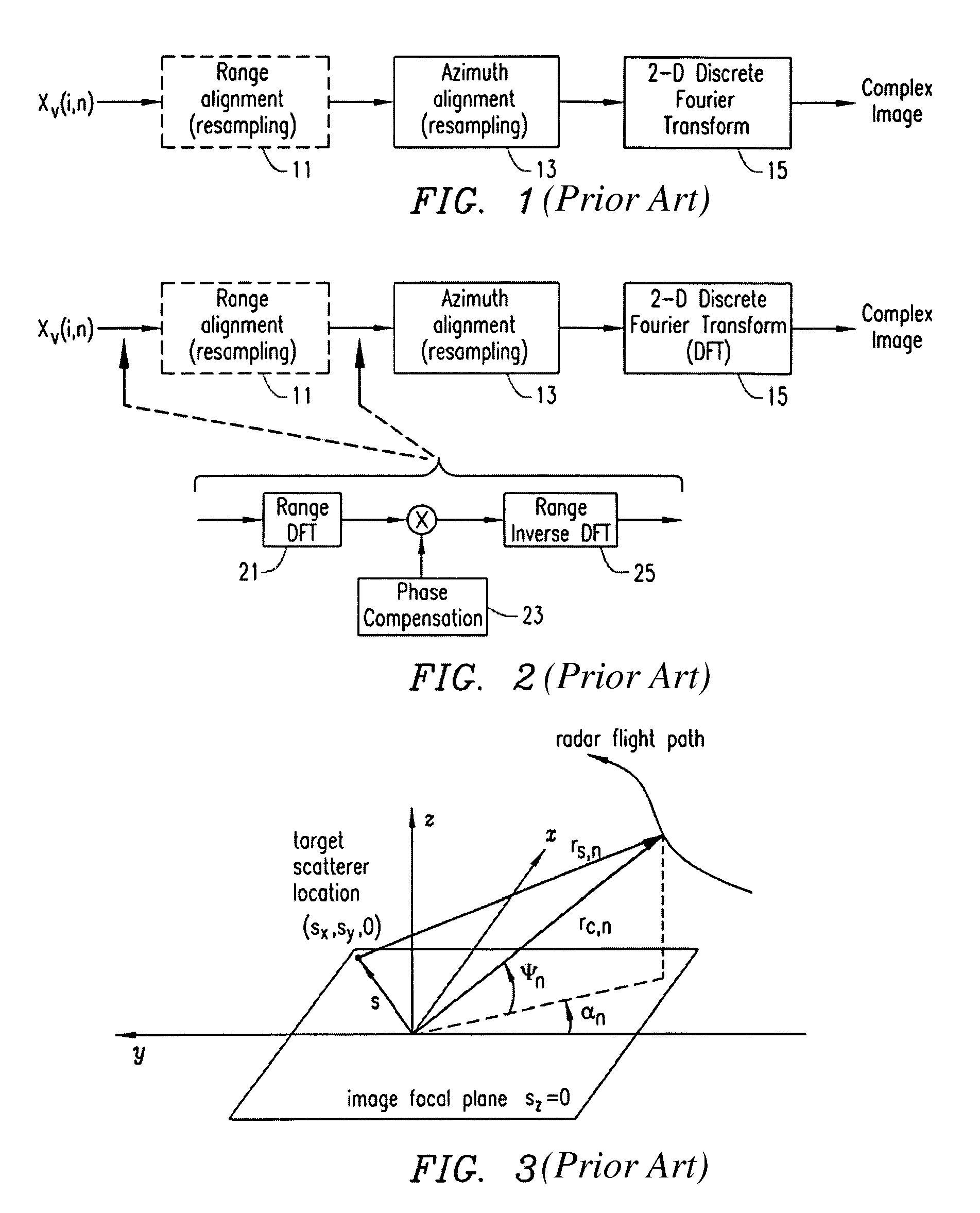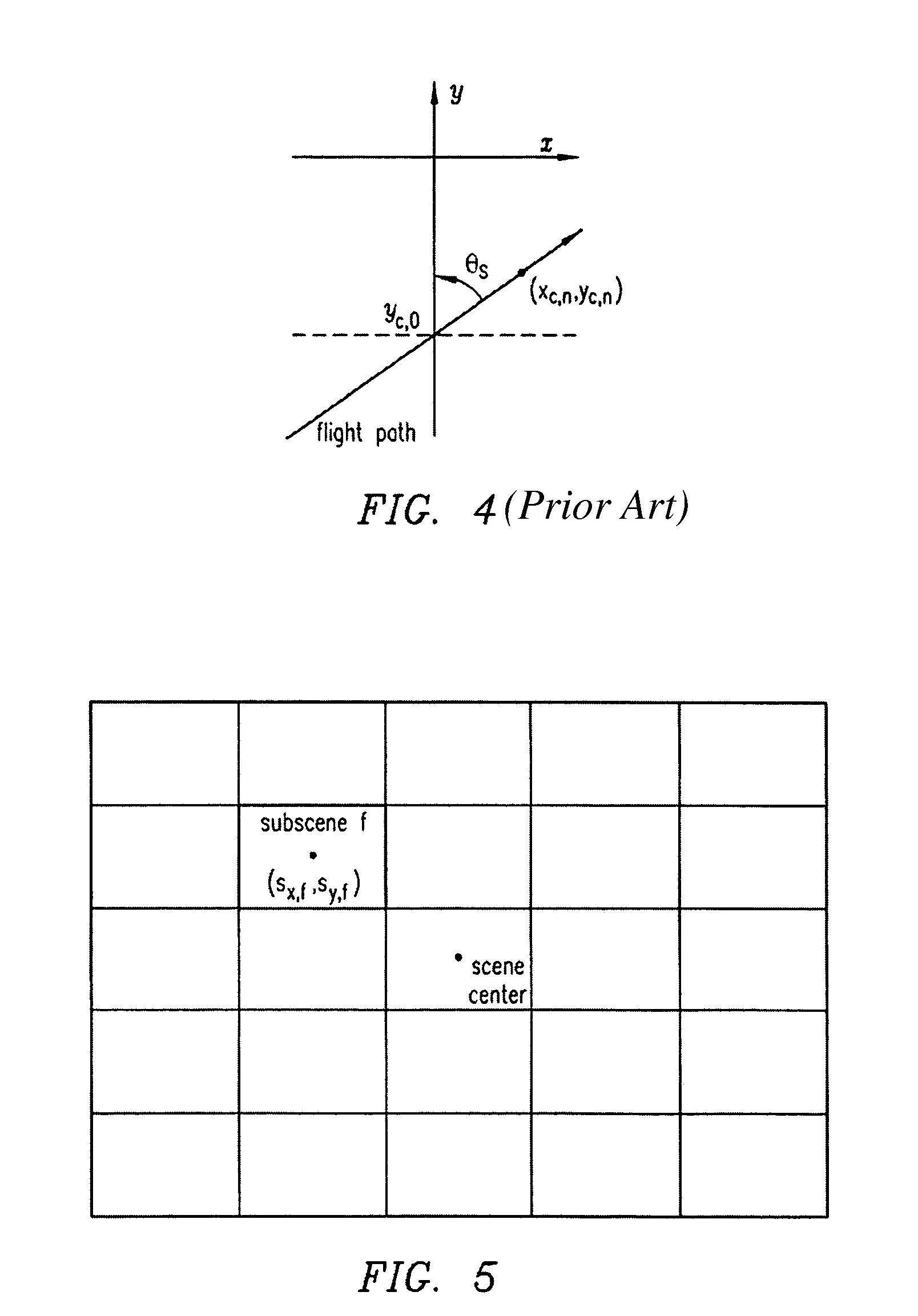Flight path-driven mitigation of wavefront curvature effects in SAR images
a technology of sar images and flight paths, applied in the field of sar image mitigation, can solve the problems of large scenes with relatively coarse resolutions that exhibit artifacts, small scenes at finer resolutions that suffer more from range migration effects, and image formation is typically computationally intensiv
- Summary
- Abstract
- Description
- Claims
- Application Information
AI Technical Summary
Benefits of technology
Problems solved by technology
Method used
Image
Examples
Embodiment Construction
[0020]Consider a conventional LFM transmitted signal of the form
[0021]XT(t,n)=ATrect(t-tnT)expj{ϕT,n+ωT,n(t-tn)+γT,n2(t-tn)2}(1)
where
[0022]AT=the amplitude of the transmitted pulse,
[0023]t=time,
[0024]n=index value of pulse number, −N / 2≦n≦N / 2,
[0025]tn=reference time of nth pulse,
[0026]T=transmitted pulse width,
[0027]φT,n=transmit waveform reference phase of nth pulse,
[0028]ωT,n=transmit waveform reference frequency of nth pulse, and
[0029]γT,n=transmit waveform chirp rate of nth pulse. (2)
The received echo from a point scatterer is a delayed and attenuated version of this, namely
[0030]XR(t,n)=ARATXT(t-ts,n,n)(3)
where
[0031]AR=the amplitude of the received pulse,
[0032]ts,n=echo delay time of the received echo for the nth pulse. (4)
This is expanded to
[0033]XR(t,n)=ARrect(t-tn-ts,nT)expj{ϕT,n+ωT,n(t-tn-ts,n)+γT,n2(t-tn-ts,n)2}.(5)
The use of conventional stretch processing and Quadrature demodulation requires mixing XR with a Local Oscillator (LO) signal of the form
[00...
PUM
 Login to View More
Login to View More Abstract
Description
Claims
Application Information
 Login to View More
Login to View More - R&D
- Intellectual Property
- Life Sciences
- Materials
- Tech Scout
- Unparalleled Data Quality
- Higher Quality Content
- 60% Fewer Hallucinations
Browse by: Latest US Patents, China's latest patents, Technical Efficacy Thesaurus, Application Domain, Technology Topic, Popular Technical Reports.
© 2025 PatSnap. All rights reserved.Legal|Privacy policy|Modern Slavery Act Transparency Statement|Sitemap|About US| Contact US: help@patsnap.com



